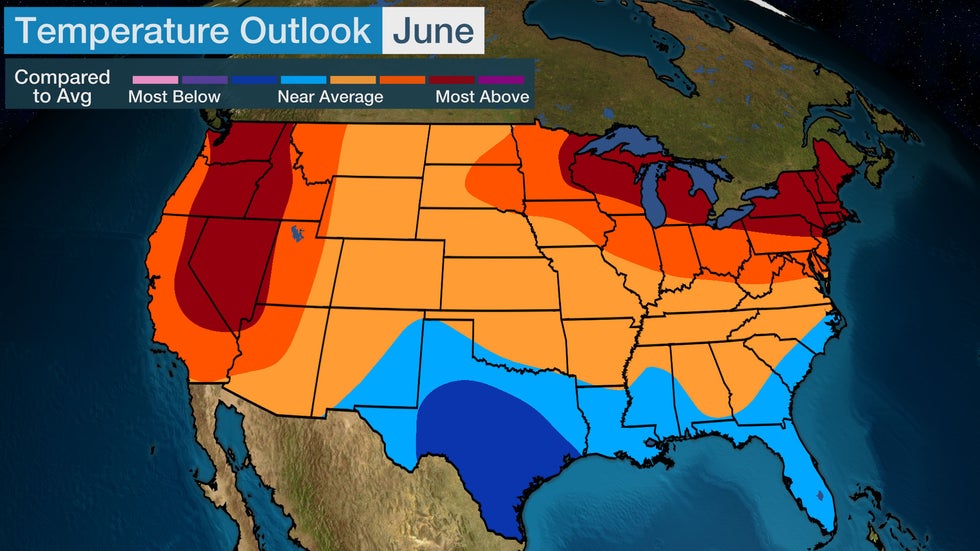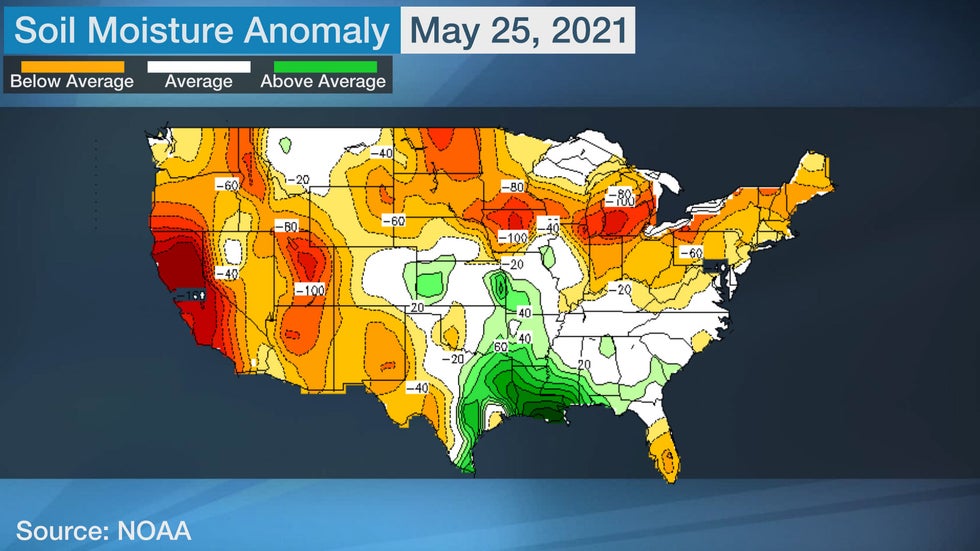Published: May 28, 2021
Temperatures in June could be topsy-turvy with the hottest conditions relative to average in the northern and western United States as parts of the South possibly escape big heat for the start of summer.
Stay Cool With This Pool & Beach Gear (SPONSORED)
The Great Lakes, Northeast and portions of the West are the regions most likely to experience above-average temperatures in June, according to the latest outlook from The Weather Company, an IBM Business. Hotter-than-average temperatures in the West would be unwelcome given the widespread drought and wildfire concerns heading into summer.
Meanwhile, parts of the Deep South might see conditions that are somewhat cooler than expected for this time of year. But the region will still experience warm and humid days, as is typical in June.

"The unusually heavy rains across Texas and the southern Plains, along with a lack of high-latitude blocking, should act to limit big June heat across the South, while enabling it at higher latitudes," said Todd Crawford, chief meteorologist with The Weather Company.
Above-average soil moisture, depicted in green on the map below, shows the thumbprint of the recent soaking rains from Texas to the northern Gulf Coast. Higher soil moisture often correlates with somewhat cooler conditions where those areas exist.
 Areas shaded green had soil moisture that was above average as of late May.
Areas shaded green had soil moisture that was above average as of late May.However, there is still some uncertainty in the forecast for June, particularly when it comes to how long the split-temperature regime might last.
"The biggest forecast uncertainty is how long the warm-north/cool-south pattern will last; if blocking re-emerges later in June, the pattern may flip, with heat building across the South," said Crawford.
Get This Portable A/C Unit That Can Drop Temps 59 Degrees (SPONSORED)
Keep in mind this outlook is an overall trend for the month. Therefore, we will likely see periods that are hotter or cooler in each respective region of the country when compared to what is shown.
Average June Temperatures
Highs in June average in the 70s for much of the northern tier, with widespread 80s from the mid-Atlantic and Southeast into the Central Plains and the Great Basin. Temperatures typically top out in the 90s for much of the southern tier.
 Average Highs in June
Average Highs in JuneAverage lows in the 60s become more common east of the Rockies in June, while temperatures continue to dip into the 30s and 40s in the Northwest, northern Rockies, northern Great Lakes and far northern New England.
 Average Lows in June
Average Lows in JuneThe Weather Company’s primary journalistic mission is to report on breaking weather news, the environment and the importance of science to our lives. This story does not necessarily represent the position of our parent company, IBM.
The Weather Company’s primary journalistic mission is to report on breaking weather news, the environment and the importance of science to our lives. This story does not necessarily represent the position of our parent company, IBM.

No comments:
Post a Comment